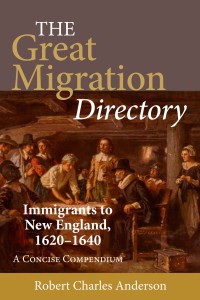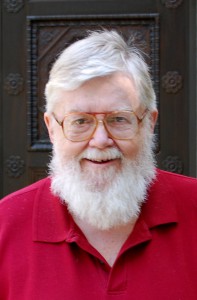 The Great Migration Directory attempts to include all those who immigrated to New England during the Great Migration, and only those immigrants. After much examination of the historical record, and particularly of the activities of the passenger vessels each spring, I determined that the Great Migration ended during 1640,1 and so this volume is designed to include every head of household or unattached individual who arrived between 1620 and 1640.
The Great Migration Directory attempts to include all those who immigrated to New England during the Great Migration, and only those immigrants. After much examination of the historical record, and particularly of the activities of the passenger vessels each spring, I determined that the Great Migration ended during 1640,1 and so this volume is designed to include every head of household or unattached individual who arrived between 1620 and 1640.
This basic conclusion must be tempered by two other considerations, which have always guided the Great Migration Study Project. First, because published errors are immortal, an error of omission is always preferable to an error of commission. If someone who was not a Great Migration immigrant is included in this volume, that mistaken conclusion will live forever on library shelves. If, on the other hand, a demonstrable Great Migration immigrant is omitted from this volume, he or she can always be added to the list. Thus, when deciding whether or not to include a given immigrant in this volume, I have always taken a conservative approach.
Second, because very few passenger vessels sailed from England to New England during the winter months, the Great Migration Study Project has always assumed that anyone who appears in New England records by May of a given year must have arrived no later than the previous calendar year. This explains my decision to survey all contemporaneous sources through May of 1641.
With this background in mind, let’s review some examples of who has been included and who has been excluded. The largest source of false claims of participation in the Great Migration is the corpus of published genealogies of the last century and a half, which includes many undocumented and unsupported statements that this or that immigrant arrived in 1630 or at some other date between 1620 and 1640. One of the most egregious of such sources is the History of Lynn by James R. Newhall, which includes a long list of immigrants said to have come in 1630, but with no justification or evidence.
Unfortunately, James Savage, in compiling his Genealogical Dictionary of New England (1860), picked up many of these claims without expressing any doubts, and, more recently, Meredith Colket included many of these same statements in his Founders of Early American Families (1985). None of these immigrants, nor any of the hundreds more similarly claimed in other genealogies and journal articles, has been included in this volume, unless there exists independent evidence in contemporaneous sources for their arrival by 1640.
Conversely, however, I did not include in the Directory all those who appear in contemporaneous sources. For example, on a number of occasions crew members of the many vessels that came to New England, and especially those who came to Boston, ran afoul of the law during their brief time ashore, and thus made an appearance in the colony court records. When those who made a single appearance in the records may be identified as transient crew members or merchants, I have not listed them here.
Other men and women appear in the surviving records who never came to New England. Andrew Coleman, for example, appeared twice in New England sources in 1640, once in a Quarter Court session record in Boston and once in the notarial records maintained by Thomas Lechford.2 These were in fact two versions of the same document, created by Lechford and then entered in the court records. Careful reading of the item shows that all the actions attributed to Coleman took place in England, and that he had authorized John Haynes of Hartford to act for him in New England. Andrew Coleman does not get an entry in the Directory.
Adapted from Robert Charles Anderson's introduction to The Great Migration Directory.
Notes
1. Robert Charles Anderson, “When Did the Great Migration End?” The Great Migration Newsletter 22 [2013]: 3, 6.
2. Nathaniel B. Shurtleff, ed., Records of the Governor and Company of the Massachusetts Bay in New England, 1628−1686, 5 vols. in 6 (Boston: W. White, 1853−54), 1: 298; Edward Everett Hale, ed., Note-Book Kept by Thomas Lechford, Esq., Lawyer, in Boston, Massachusetts Bay, from June 27, 1638, to July 29, 1641 (Cambridge, 1885; reprinted Camden, Maine: Picton Press, 1988), 308.
Share this:

About Robert Charles Anderson
Robert Charles Anderson, Director of the Great Migration Study Project, was educated as a biochemist and served in the United States Army in electronics intelligence. In 1972 he discovered his early New England ancestry and thereafter devoted his time and energies to genealogical research. He published his first genealogical article in 1976, and about the same time began to plan for what eventually became the Great Migration Study Project. In 1983 he received a Master’s degree in colonial American History from the University of Massachusetts at Amherst. Anderson was elected a Fellow of the American Society of Genealogists in 1978 and has served as Secretary and President of that organization. He became a Contributing Editor of The American Genealogist in 1979, Associate Editor in 1985 and Coeditor in 1993. He has been an editorial consultant to the New England Historical and Genealogical Register since 1989.View all posts by Robert Charles Anderson →